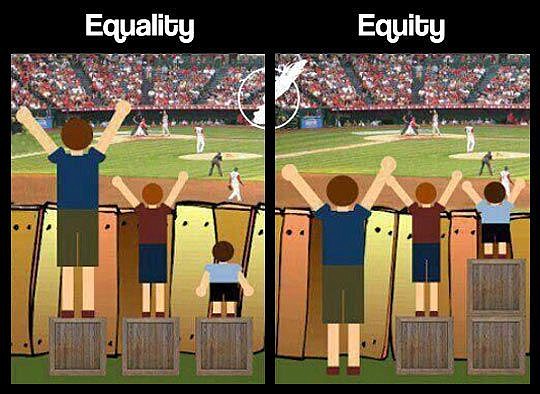Tonight, the Hamilton County Board of Education is expected to get an update on the work of the school system's equity task force - a group that recently was asked to study the inequities in our schools with an eye toward fixing them.
The update will follow weeks of confusion and rumors - some sparked by a couple of school board members being yanked by community extremists to see the Brown v. Board of Education boogeyman hiding under the bed.
These folks aren't thinking about our kids. They are thinking about divisive politics.
You see, the problem began when the grassroots group UnifiEd decided to move beyond raising neighborhood awareness for educational needs to a more political level by offering political candidate endorsements and forming a political action committee - a PAC - to help the local candidates they endorse.
In other words, community fiefdoms might have less sway if a grassroots group with an eye toward improving education across the entire county was suddenly endorsing candidates and helping them pay for election signs.
This story is further complicated by the very nature of our geography and continuing socioeconomic segregation. The more suburban our schools are, the richer and whiter they are. The deeper in our central city schools are - excepting our magnet schools - the poorer, blacker and browner they are. And the poverty that stalks those schools of color begets lower school success overall, not to mention what it costs to have 60 percent of all of our graduates not be jobs-ready.
In poor homes, there are fewer assets to buy books and adequate food, to pay for school outings, to support a PTA that can fund an art teacher or a music teacher. Among about 44,500 Hamilton County public school students, about 37 percent live in poverty, and most attend one of our 16 schools situated in impoverished neighborhoods. Consequently many of those poor schools are among the county's poorest performing - in part because the students there have less access to extra teaching help and learning resources than students in richer communities. The school system may be giving all schools roughly the same equal resources, but the rich school support systems are paying for extras while the poorer ones - already behind - can't fully take advantage even of the resources they have.
One recent project of UnifiEd, the APEX Equity Collective, advocates for leveling the playing field, and one of several platforms to do that includes a recommendation that the Hamilton County Department of Education develop a plan to end socioeconomic and racial segregation.
Those may seem like loaded words, but they shouldn't. Not in 2018. Magnet schools go a long way toward accomplishing the kind of diversity that helps a school receive better support - both from the school system and from parents. The planned new Future Ready Institutes also will spread opportunity. There are other good and relatively painless fixes, and this year we'll continue to make great strides toward finding more.
But conspiracy theorists in our county wrongly see what they call "code" words in the plan - like "enhanced transportation options." They contend this means "forced busing."
Really? It probably means something more like the six or eight additional bus routes the county will likely have to add to move children to the new Future Ready Institutes they choose to attend. As we build, expand and move more schools, that also means additional or changed bus routes.
The whole idea, after all, is to continually add more educational choice and expanded resources in our county.
We hope the board members continue to listen to their hearts, and that they continue to trust our new and innovative superintendent in his pursuit to find the best way to bring the best educational equity and resources to all students in Hamilton County.
